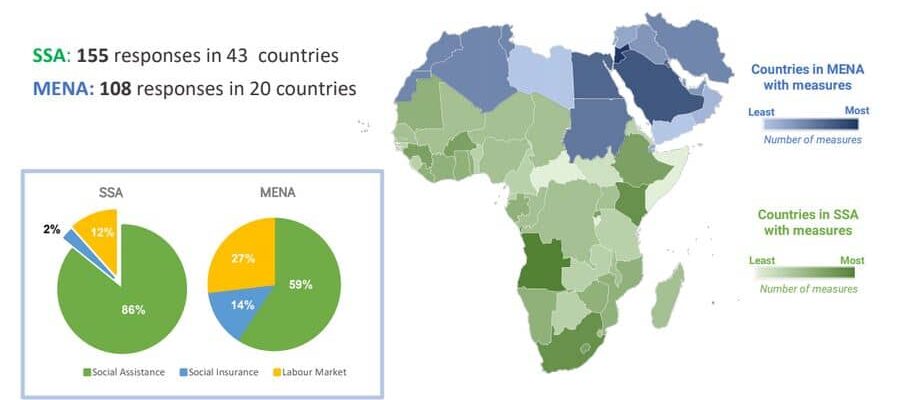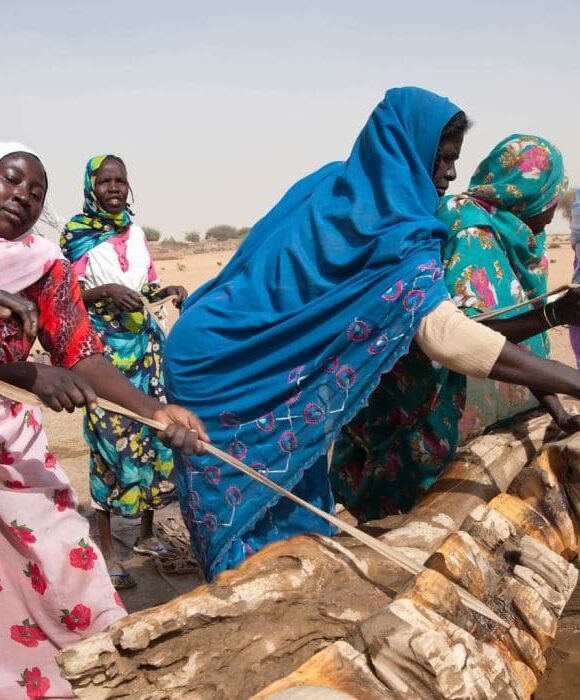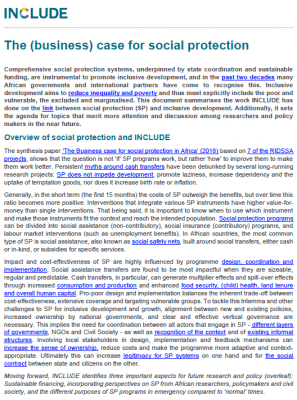
On November 16th, INCLUDE held the third session of its 2020 Platform Meeting with members, special guests and experts from various fields. The session aimed to understand the changing perspectives of African policy stakeholders on social protection (SP) (and specifically cash transfers) as a policy instrument to mitigate COVID-19 income losses (short–term) and promote the reduction of poverty and inequality post-COVID-19, with some stimulating conclusions.
Comprehensive social protection systems should link disaster responses to structural social protection and strengthen institutions to transition to new forms of SP for longer term stresses. Innovations of local governments can play important roles, especially in non-traditional policy areas. Digital platforms and digitisation of financial services, health care and public services, as well as coordination and connectivity between departments and levels of government, donors and CSOs could bring about a form of inclusion but require a greater push moving forward. Dedicated funding upwards of 2% of GDP, legal recognition, coordination, optimisation of the patchwork social protection programmes currently in place, and institutionalisation should be the start towards more comprehensive social protection systems.
The importance of SP had been recognised pre-COVID-19 by many governments, as well as on a pan-African level. Several African governments have been running SP programmes, often in the form of cash transfers (CT) for specific groups (e.g. elderly, children) and cash-for-work for able-bodied unemployed persons. The most adequate programmes were longstanding national programmes with large coverage, compared to donor-implemented and -funded programmes (implemented often on a district level). This was confirmed by Dr. Gift Dafuleya, lecturer at University of Venda and researcher at the Center for Social Development in Africa (CSDA), who presented an overview of pre-COVID-19 Social Protection programmes in African countries and compared their coverage, sources of funding (state/external donors) and transfer levels (download slides to the right). He pointed to the key role of national governments and, most importantly, domestic funding in reaching the poor at scale. However, the actual establishment of coordinated and comprehensive national SP systems remained limited. To reduce existing inequalities, the recommendation was made to dedicate ±2% of a country’s GDP to SP programmes.
In terms of policy responses implemented by Sub-Saharan African governments, 43 countries responded with a total of 155 SP measures, of which the majority classified as social assistance – predominantly (short term) cash transfers and subsidies or utility waivers. These figures were provided by Lena Gronbach, researcher with Cape Town University and IPC-IG, whose research mapped government-led SP responses to COVID-19 in Sub-Saharan Africa (from March to end September 2020) (download slides to the right). She indicated that while many existing SP programmes were expanded vertically (topping up existing beneficiaries’ social assistance), others were expanded horizontally (extending coverage to new groups of beneficiaries such as informal workers, or the ‘new poor’). In these responses, the use of digital tools for identification, registration and delivery of transfers stood out.
These general observations were echoed by specific experiences from the invited participants in the discussion.
- In Kenya, different agencies and governments combined forces in a coordinated way to increase the social protection budget one hundred-fold to 10 million USD to cushion the impact of recent public health measures on vulnerable households in the current financial year. Digital solutions and collaboration with banking and telecom providers such as the mobile money platform were critical to the response.
- In Ghana, fees for drinking water were waived completely, and those for electricity by 50%. Local governments distributed innovative relief packages, such as the relaxation of property taxes, foregoing food distribution due to social distancing. Additionally, the Livelihood Empowerment Against Poverty (LEAP) programme, which targeted 1.5 million households pre-COVID-19, enabled a one-off cash transfer in May to all recipients. This corresponds well with the observation of Dr. Dafuleya that institutionalised and mature programmes were quicker to respond than those with weak institutions.
Political economy of SP, especially of cash transfers, should not be underestimated. For instance, in Uganda, the myths surrounding social assistance persist partly to keep foreign influence under control. Yet, certain SP programmes that have been initiated by donors have been taken over by the Ugandan government and cemented their place on the agenda of national development planning. In Kenya, devolution caused counties to implement cash transfer programmes for increased political support. SP has become a legal right in Kenya, albeit with challenges in duplication and coordination of programmes by state-actors as well as non-state actors. Moreover, the execution of these rights by the poor remains low. The politicisation of social protection poses challenges, especially regarding capture of targeting mechanisms and partisanship in implementation, but it also provides opportunities to place social protection more firmly in the public sphere of government responsibilities.
The scope of cash transfers and blind spots in the SP discussion were further discussed.
- The scope of cash transfers should not be restricted to consumption smoothing during the emergency. Economic multiplier effects from cash transfers have been observed beyond consumption effects. To stimulate markets and private investments for inclusive growth, the role of cash transfers as investments should therefore be accentuated.
- Migrants are an important blind spot in the SP discussion. They are usually excluded from social assistance due to their transitory status, while their vulnerability is prominent. With the COVID-19 restrictions, remittances fell dramatically and migrants fell between returning to their countries / villages of origin or staying put.
In conclusion, this discussion highlighted the need for comprehensive social protection programmes that go beyond the emergencies toward structural poverty reduction. Donors can play a more complementary and supportive role, but governments are essential in reaching coverage of national social protection. However, political commitment is not a given. Politics is firmly at the centre of these processes, requiring political interests to strengthen the social contract with the poor in return for support for governments.


